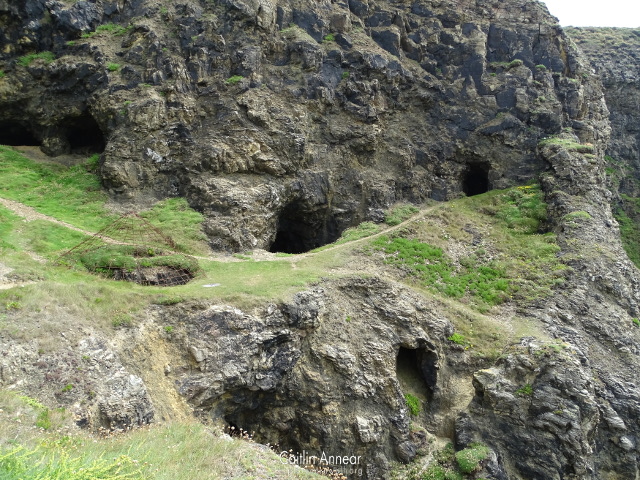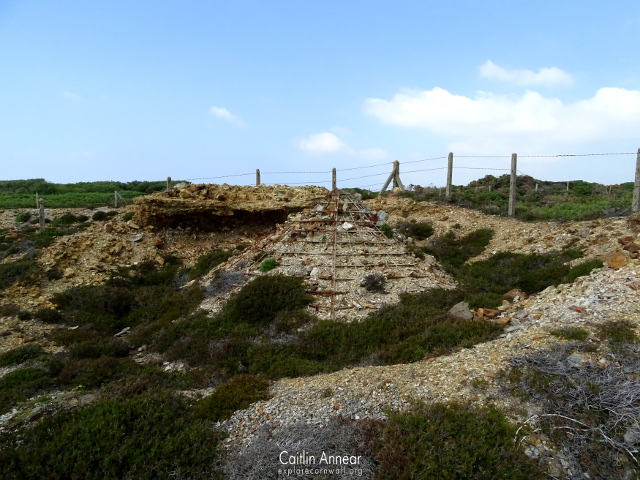All along the cliffs from Perranporth to Cligga Head are prosperous mine workings that have worked under several names and often together. These include: Great St George, Perran St George, Wheal Perran, Perran United, Good Fortune and Droskyn.
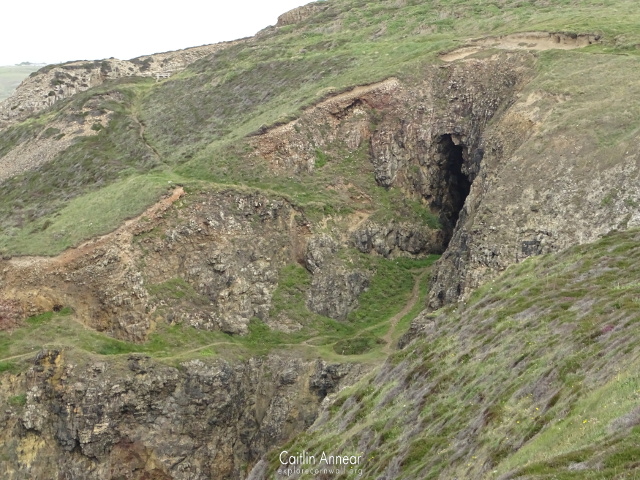
The workings all along this stretch of coast are ancient, the cliff face littered with old adits. While all of the old mines were separate ventures under their own names, they’ve crossed over and amalgamated so many times that it’s difficult to distinguish where one ends and another begins. For that reason they’re all going to be included in the same post, covering all of the workings from Droskyn (which has its own post), up to Cligga Head.
Great St George was first mentioned as far back as 1589. In 1779 there were some disputes over land ownership. From 1825 the sett was acquired by English Mining Association along with Wheal Leisure, a prominent mine in Perranporth.
Over the next ten years the miners found a rich pillar of copper, producing very pure ore with few impurities. In 1831 it worked alongside Droskyn again, sinking a new shaft; unfortunately no copper was found and this was abandoned. By 1836 output was also falling in the Wheal Leisure section.
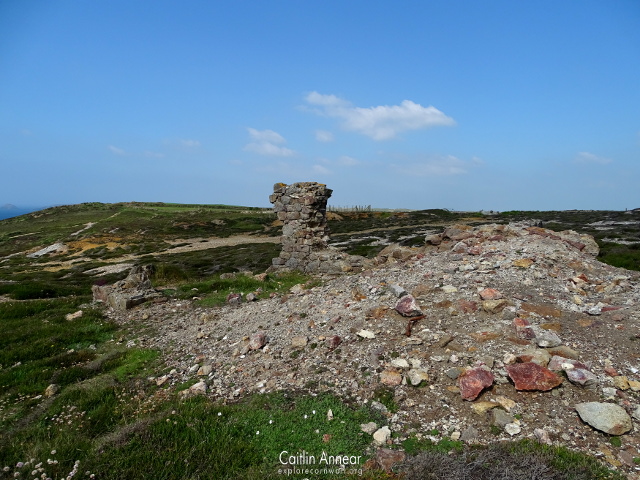
In 1838 there was another legal dispute, this time between the English Mining Company and local Captain Vivian. The former had lost their grant, with Captain Vivian taking over the mine; Vivian won and was paid substantial damages. Unfortunately this lead to the closure of Wheal Leisure and soon after St George. Locals would then head out to the cliffs with their bucket and spade to collect fallen rocks, dress them and made a small profit. There was an attempt to amalgamate the mine in 1857, but the heyday of this mine was over. Small amounts of tin and tungsten were produced up until the 20th century, and some scratching around was done at Good Fortune shaft between 1901-09, its long history came to an end.
Wheal East (50 fathoms/91m), Mudge’s (50 fathoms/91m), Campbell’s (50 fathoms/91m), Burton’s (40 fathoms/73m), Vectis’ (40 fathoms/73m), Goyne’s (60 fathoms/110m), Humphrey’s (70 fathoms/128m), Engine (70 fathoms/128m), Stephen’s (60 fathoms/110m), Henry’s (60 fathoms/110m), Tregonning’s (60 fathoms/110m), South Engine (93 fathoms/170m), Catcher’s (30 fathoms/55m), Luke’s (40 fathoms/73m), Old Engine (80 fathoms/146m), Painter’s (50 fathoms/91m), Michell’s (50 fathoms/91m), Sump (43 fathoms/79m), Hawk’s, Letcher’s (106 fathoms/194m), Lemon (50 fathoms/91m), Devonshire (72 fathoms/132m), Giddy’s (30 fathoms/55m), Hodge’s, Footway (43 fathoms/m), East St George (40 fathoms/79m), Wheal Valley, New, Good Fortune, John’s/New Good Fortune and Pill’s.
Droskyn, Kernick’s North/Wheal East, Kernick’s South/Humphrey’s, Calloway’s, Dashwood’s, Lemon, Truscott’s, Coom’s, Hawk’s, Way’s, Letcher’s, Good Fortune/Great St George, Wheal Prudence and Caunter.
1800-04, 1808, 1828-32 and 1835-36 Great St George
29,544 tons (30,018,090 kg) of copper
1834-42 and 1862-64 Wheal Perran
3,200 tons (3,251,350 kg) of 7.75% copper, 20 tons (20,321 kg) of black tin and 10 cwt (508 kg) of lead
1854-55 Wheal Perran and Wheal Leisure
4,550 tons (4,623,013 kg) of 3.25% copper
1814-40, 1886-94 and 1899 Great St George and Droskyn
73,705 tons (74,887,737 kg) of 6% copper, 80 tons (81,284 kg) of black tin and 1.5 tons (1,524 kg) of tungsten
1815-16, 1845-60 and 1853-58 Perran St George
32,925 tons (33,453,344 kg) of copper, 16 tons (16,257 kg) of tin, 7 tons (7,112 kg) of zinc and 305 tons (309,894 kg) pyrite
1901-06 Good Fortune shaft
50 tons (50,802 kg) of tin, 4 tons (4,064 kg) of copper and 10 cwt (508 kg) of tungsten

There are few records pertaining to these mines, so its likely that more engine houses stood here. By 1830 there were 70″, 60″ and 40″ pumping engines. A year later a 36″ pumping engine was erected on a new shaft.
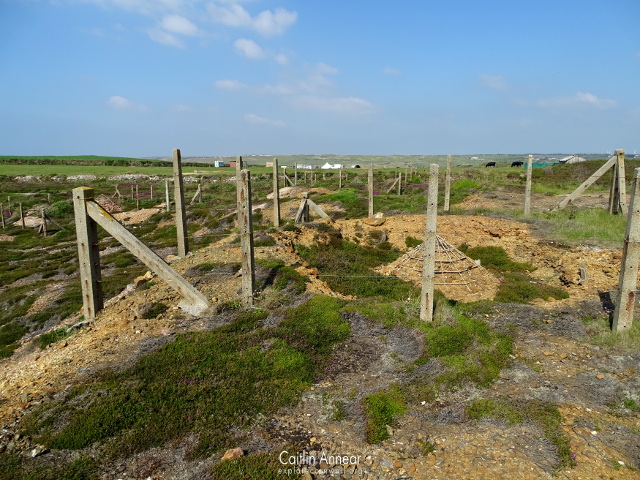
Access to the whole site is free for everyone as it all sits on public footpaths and open access land, however while many of the shafts have been filled in and fenced, stick to the paths to avoid falling down any holes.
The closest parking is at Perranporth.
Dines, H. G. (1956) The metalliferous mining regions of south-west England. British Geological Survey.
Hamilton-Jenkin, A. K. (1962) Mines and Miners of Cornwall: II St Agnes & Perranporth. Truro: Truro Bookshop.


